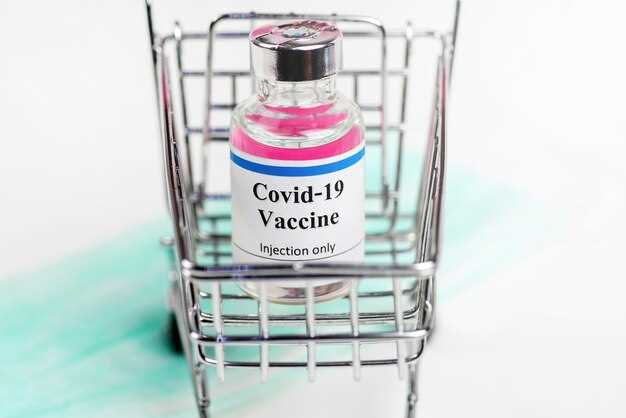Adopt a centralized cold-chain audit and buffer-stock policy now to prevent waste and speed up vaccine administration. This approach lowers temperature excursions, streamlines receiving at distribution hubs, and ensures plenty of doses reach clinics on schedule. Build a flexible plan with a bank of cold-storage units and spare pallets ready to deploy in high-demand state markets such as california.
additionally, align procurement and logistics with a clear forecast and costprice controls. fareva and other manufacturers have reportedly expanded fill-finish capacity, yet bottlenecks persist at receiving docks and in traceability. Companies that share real-time data on temperature, receiving, and transport status reduce delays. daniel, a supply-chain analyst, notes that alone, a narrow data silo can derail a batch.
Plan for the long term with decades-long projections, expanding cold-chain infrastructure and training for staff across states. A robust strategy should include stepwise increases in throughput at hubs, standardized costprice tracking, and regionally coordinated rollout to avoid backlog in rural clinics. Regular temperature monitoring and receiving data help catch excursions early and preserve vaccine potency.
To mitigate bottlenecks, build a proactive communication loop among manufacturing, logistics, and teams that administer vaccines. A real-time dashboard that shows state, facility, and warehouse status enables managers to react within hours rather than days. For example, a california pilot tied to hospital receiving windows cut idle time by 40% and trimmed waste when shipments faced delays.
Warp Speed, the Defense Production Act, and bottlenecks in the US vaccine supply chain

Deploy Defense Production Act authorities to secure critical inputs and scaled fill-finish lines within the next quarter, coordinating with pfizers, moderna, and astrazenecas supply networks to deliver doses on a predictable cadence. Set a target to increase monthly doses delivered by at least 20-30% across contracted plants while maintaining safety and quality. Use clear terms, update purchase lists, and lock capital when needed to shorten lead times for essential components.
Key bottlenecks include limited syringes and vials, restricted fill-finish capacity, and malfunctions in cold-chain environments that disrupt vaccine stability. The supply chain shows variable lead times across suppliers and shipping modes, creating mile-long delays from input yards to vaccination sites. To prevent gaps, maintain diversified supplier lists for critical components and ensure appropriate stock at major regional hubs. The limited capacity at several sites means some production lines must operate around the clock, testing scientists as they troubleshoot issues quickly, doing rapid development and adjustment.
To address these gaps, structure a three-part plan: capacity expansion, cold-chain resilience, and distribution alignment. Expand three fill-finish lines at existing U.S. plants and explore new partnerships with pfizers, moderna, and astrazenecas to increase delivery capacity. Invest capital in sterilization, packaging, and storage to deliver an incremental 100-150 million doses per month, with development of standardized environments for quick scale. Build real-time dashboards to track status across levels, highlighting malfunctions and corrective actions.
Address the modes of delivery and patient-facing aspects: ensure appropriate storage environments for each vaccine platform, from ultra-cold Pfizer to Moderna and vector-based astrazenecas, and prepare for potential supply chain disruptions across regions. Establish purchase priority lists for states and healthcare systems to vaccinate faster, and align purchase terms with manufacturers to keep the supply of syringes, vials, and caps steady. Increase the level of collaboration between scientists, procurement teams, and public health officials to adapt to disease trends and to vaccinating in high-demand periods.
Activate dedicated DPA-funded task forces to monitor supply risks, share data across environments, and adjust schedules to increase early-year vaccination rates. Maintain transparent customer-facing communications about expected deliver times and set realistic vaccine supply targets for state and local purchase orders. Regularly update the lists of approved suppliers and the capacity level for each site to prevent malfunctions from cascading, and ensure the capital invested yields tangible increases in doses delivered and in the vaccination rate.
Vaccine formulation and API supply constraints

Make API sourcing resilient by securing diversified contracts with three vetted suppliers, including biologics manufacturers, and lock in long-term terms that cover at least three months of lead time. Align testing and release plans with the agency to preempt delays that affect cvncov and other vaccines, and set clear in-hand readiness criteria for each supplier.
Identify three critical chokepoints in formulation and API supply: API availability, formulation-specific excipients, and cold-chain handling. The team identifies bottlenecks early by using siis to track orders, lot status, and quality events; with this data, accelerate onboarding of new suppliers and reduce months of lag.
Maintain a formulation playbook with specific requirement sets for each product, including cvncov, and designate approved supplier lists for biologics inputs. Biotech teams should share stability and compatibility data with the agency to prevent late-stage adjustments. Newly qualified suppliers must demonstrate performance across three consecutive batches and in multiple places to prove robustness.
Ensure cold-chain readiness by mapping storage and transport capacity at all sites, with continuous temperature monitoring and validated contingency routes. Plan with populations in mind so that in-hand handling remains stable during peak demand, and collaborate with field sites to confirm that newly added hubs can support long-term needs.
Establish cross-functional reviews weekly to monitor API risk, update siis datasets, and adjust sourcing plans. This coordinated approach helps prevent delays in months with cvncov formulations and keeps the supply for biologics-ready pipelines moving smoothly.
DPA authorities and manufacturing acceleration for vaccines
Implement a unified, DPA-led rapid authorization and manufacturing acceleration plan with defined times for reviews and approvals and a shared data framework to secure steady volumes of vaccine doses.
Form a cross-department task force to align regulators, procurement, and industry partners, ensuring transparency and consistent standards across environments and chains. Include trade officials, health authorities, and manufacturing leads so inspections and release criteria can be streamlined. The work began by mapping critical steps and what must be fast-tracked, then scaling success across volumes and sites.
Publish real-time reports and dashboards, including proofpdf documents, on materials, capacities, and volumes. Providing end-to-end visibility from supplier to patient, and using technology to track chains and batch statuses. Set clear what metrics and thresholds drive action and define a point for escalation during supply shocks. Maintain similarities across facilities to ensure reliable response times.
Address brexit-related trade frictions by harmonizing documentation and cross-border transfer procedures, with a dedicated department spokesperson providing regular reports. This includes proof of compliance and included safety measures. Establish a subject-level protocol for rapid material routing and temporary waivers where appropriate, ensuring continued material supply and manufacturing continuity.
Invest in innovations in process design, automation, and digital quality systems to improve times to scale. Focus on materials specification alignment, improved provenance tracing, and transparent subcontracting. Providing a consistent point of contact for providers and suppliers. The department should publish what has been performed, and what remains to be addressed, in a transparent series of reports. The approach should be similar across sites to minimize risk and expedite response during surge periods.
Cold-chain logistics: storage, transport, and temperature control at scale
Starting with a baseline cold-chain audit and deploying continuous temperature monitoring at every node, from manufacturing to point-of-use. Use automated alarms, validated shippers, and backup power; ensure the head of operations receives a daily dashboard with proofpdf documentation for traceability. Being able to verify events in terms of time and temperature supports analytical decisions and informs the growing portfolio of medicines being moved through the chain.
Storage at scale demands robust, validated equipment and standardized operation procedures. For medicines, storage targets include -70°C for the most sensitive pharmaceutical vaccines, -20°C for many products, and 2-8°C for everyday use. The best practice includes redundant power, calibrated data loggers (accuracy ±0.5°C in freezers, ±2°C in transport), and consistent temperature mapping across zones. When times for completion of a storage phase approach, perform quarterly tests (tests performed) to verify capability; keep records in the information system. Since regulatory terms are strict, maintain one source of truth and track being changes in inventory levels.
Transport and handling require validated shippers, continuous data recording, and risk-based routing. Use passive or active systems with GPS-tracked temperature history; dry ice shipments to maintain -70°C and solid-phase materials for other ranges. For each leg, set guard bands (±2°C) and document transit times; though delays occur, pre-defined contingency plans should reduce impact. The information from tests performed on carrier performance informs head-of-supply decisions and helps the organisation prioritising improvements. Include proofs of delivery and temperature data as evidence of care.
Data governance and continuous improvement: store all temperature records, alarm events, and maintenance logs in a centralized information system. Run analytical checks to detect recurring excursions, and take corrective action within 24-48 hours. Being able to compare performance across facilities supports best-practice sharing and consistent operations throughout the network. Lessons from takeda-style analytical reviews show that standardised terms and common KPIs drive faster completion of remedial actions. The benefit is a more resilient supply line for vaccines and medicines, even during growing demand or supply shocks.
| Stage | Target Temperature (°C) | Allowable Excursion | Typical Duration | Monitoring/Records |
|---|---|---|---|---|
| Warehouse storage (long-term) | -70 | -60 to -80 | per label / see proofpdf | continuous data loggers, validated SOPs |
| Transport (shipments) | -60 to -80 or 2-8 depending on product | ±5 | 0.5–3 days | validated shippers, GPS + temp loggers |
| On-site refrigeration after thaw | 2–8 | ±1–3 | per label | in-fridge charts, attached proofpdf for traceability |
| Quality & compliance | as per terms | N/A | ongoing | IQ/OQ/PQ records, audit trails |
Quality control and batch release timelines under pressure
Coordinate a collaborative batch release protocol that compresses quality testing into a parallel, risk-led workflow across sites such as delpharm and merck’s manufacturing lines, including italy-based facilities that started vaccinating populations in waves. This approach reduces release delays while preserving safety.
- Unify release criteria and create a single, living specification for identity, potency, sterility, and impurities; align acceptance thresholds across all partners to prevent re-testing and back-and-forth approvals.
- Run parallel testing instead of sequential checks; implement validated surrogate methods where appropriate so the team can release batches faster without compromising confidence, even when a site lacked full parallel capacity by using cross-site quick transfers.
- Enhance data traceability with a shared dashboard that records inputs in gram quantities for ingredients and reagents, flags deviations immediately, and shows real-time status of each QC step.
- Identify stoppers early with daily cross-functional huddles; empower teams to resolve issues within 24 hours and prevent multiple days of delay in approvals.
- Address the risk of nationalism-driven procurement by diversifying suppliers and establishing regional cross-checks to maintain consistent input quality across markets.
- Coordinate the series of steps from filling to final packaging to guarantee consistent timing; avoid batch splitting that creates extra queues or re-tests.
- Adopt a staged release plan where possible, enabling vaccinating campaigns to proceed with approved cores while pending results are cleared under predefined criteria and contingencies, using the needed data to justify a safe conditional release.
- Learned lessons from prior waves show that training, staffing flexibility, and cross-site know-how cut longer lead times; implement a rotating pool of trained QC staff to cover peak demand.
- Document inefficient approaches and choices in every cycle; track which options shortened time-to-release and which caused slowdowns, then adjust SOPs for the next series.
This framework keeps the focus on rapid, safe decisions and improves resilience against supply shocks; with steady cross-site coordination, the vaccine supply can stay aligned with vaccination targets and patient needs.
Distribution heterogeneity: regional bottlenecks and last-mile delivery
Establish fixed delivery windows by building a network of local micro-centers and mobile hubs and anchor these nodes with agencies and organizations on the ground to shorten last-mile delays in rural and peri-urban areas. Look to implement a shared filtration protocol and a single document checklist in developing markets to accelerate movement of covid-19 vaccines to community clinics, with hands-on oversight from approved local agency teams at each center.
Adopt region-aware models that capture bottlenecks in centers, transportation, and last-mile corridors. In rural and poor-road conditions, deploy lightweight, solar-powered cold-chain containers, mobile units, and light monitoring devices to maintain the approved temperature range without relying on a single national facility. Real-time dashboards help agencies and organizations reallocate capacity within 24 to 48 hours.
Target newly emerging markets by formalizing partnerships among local centers, community organizations, and private partners. A lightweight tag–sanofigsk–embedded in document workflows signals compliance checks and helps ensure filtration, traceability, and fast clearance at the last mile.
Coordinate across agencies to standardize data sharing, forecasting, and shipment clearance. Use modular centers to handle spikes in demand for covid-19 and biologics, and keep a future-ready pipeline by training local hands and building trust with rural communities in the global health supply chain. This improves access across the world and supports a resilient, adaptable network. Monitor biological indicators along shipments to catch anomalies early.

 COVID-19 Vaccine Supply Chain – Potential Problems and Bottlenecks">
COVID-19 Vaccine Supply Chain – Potential Problems and Bottlenecks">
